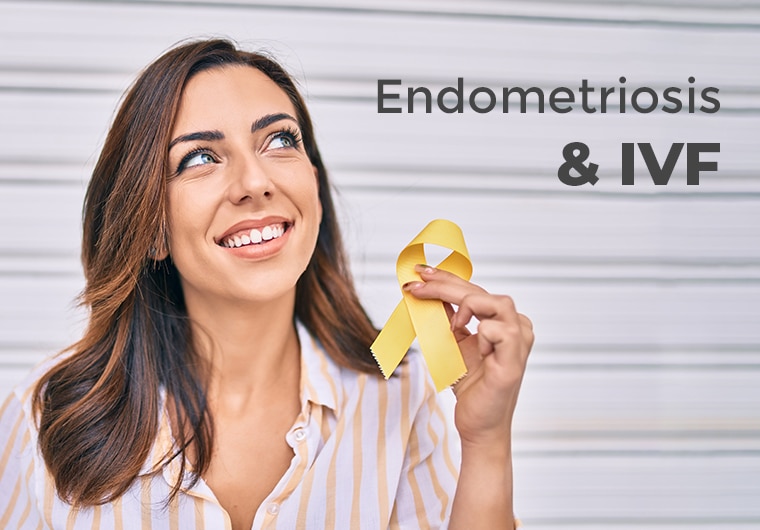
Endometriosis is a common female health condition affecting 1 in 9 women worldwide. It occurs when tissue from inside the uterus (womb), called the endometrium, grows outside the uterus.
The cause is not absolutely clear, but one of the most likely possibilities is retrograde menstruation. That is, the backwards flow of menstrual blood (including some of the endometrial cells) through the tubes and into the pelvis. Although this happens in all women, when those endometrial cells implant on the inside skin and continue to grow, it is called endometriosis.
How do I know if I have endometriosis?
Though some women with endometriosis encounter minimal pain and zero symptoms, others have chronic pain and a multitude of symptoms. The most-reported being:
- Pain before and during a period.
- Pain during or after sexual intercourse.
- Abdominal, back and/or pelvic pain outside of menstruation.
- Painful bowel movements or urination.
- Abdominal pain at the time of ovulation.
- Heavy or irregular bleeding with or without clots.
- Premenstrual spotting.
- Extreme tiredness.
- Difficulty falling pregnant.
If you have these symptoms and are concerned you may have endometriosis, the best and first step you can take is to see your GP. If necessary, your GP may refer you to a gynaecologist for additional testing. In some cases, an ultrasound will detect the endometriosis, although the only definitive method of diagnosis is through surgery, namely a laparoscopy (keyhole).
The added advantage of laparoscopy in endometriosis is that your diagnosis can be confirmed and treatment can be carried out (for mild and moderate endometriosis) at the same time. It can also be used to find out where the endometriosis is and how much of it there is, as well as making sure there is no other medical problem that is causing your symptoms.
What are the treatment options for endometriosis?
While there is no cure for endometriosis, it can be treated and managed effectively in several ways. These treatments are highly individualised and vary from case to case, reliant on the severity of the condition and the goal for the outcome – treat pain or maximise fertility.
- The most minimally-invasive treatment is medication, which is only appropriate if you are not currently trying to conceive. This works by suppressing the pituitary gland and the emission of hormones (oestrogen) that might be triggering endometriosis.
- Undergoing surgery, commonly a laparoscopy can be effective at managing the condition. Endometrial implants and scarring can often be found to block the fallopian tubes as a result of the endometriosis and can be surgically removed to restore optimal function to the organs. This is the best option to increase fertility in the woman
- If surgical treatment has not been successful, Assisted Reproductive Technology (ART) can be considered. In many cases, the combination of ovulation-stimulating medication and Intra-Uterine Insemination (IUI) is effective at enhancing fertility. If adhesions have caused irreparable damage to the fallopian tubes and surgery plus IUI have been unsuccessful in aiding conception, In Vitro Fertilisation (IVF) may be considered.
Do I need IVF if I have endometriosis?
Despite the challenges with the condition, it is possible to fall pregnant naturally. The majority of women with the condition fall pregnant without medical intervention, or the following surgery. However, some women aren’t so fortunate.
Endometriosis is known to be present in roughly 50% of cases of women who have been unable to fall pregnant following 12 months of trying. The effect of the condition on fertility is believed to be due to the endometriosis causing some distortion of the anatomy, consequently blocking or changing the function of the fallopian tubes.
Commonly, endometriosis can hinder ovulation/egg production, cause menstrual cycle disturbance, affect the fallopian tubes and subsequently embryo transport, while having detrimental impacts on the endometrium (uterus lining).
With appropriate course of treatment, pregnancy can be achieved naturally or with assisted reproductive technologies.
Can I access bulk-billed IVF if I have endometriosis?
If you have endometriosis and need IVF to achieve your help of parenthood, but want to do it within financial reach, there is a possibility you may be eligible for bulk billed IVF.
Below you can find the criteria you must meet in order to begin treatment at First Step Fertility:
- Have a Medicare card.
- Fall within a bodyweight range that meets our guidelines. If you would like any further information, please contact our friendly staff on 1800 111 373 or email info@firststepfertility.com.au
- Have been diagnosed by a First Step Fertility specialist as medically infertile.
- There is no financial means test – so you don’t have to worry about being financially ineligible for IVF.
Wherever you are in your fertility journey, w recommend you book a free consultation with one of our fertility specialists to determine your pathway.
To start your journey to building a family, contact First Step Fertility by calling our friendly staff on 1800 111 373 or book an appointment at your leisure.